
Timeless Style: How Watches Enhance Your Fashion Statement
In the world of fashion, accessories are not just additions but essential elements that define and complete a look. Among these, watches stand out as symbols of style, sophistication, and personal expression. At JWLS, we understand that a watch is more than a time-telling device; it’s a statement piece that reflects your personality and enhances your style. Here’s how integrating watches into your fashion lineup can elevate your entire aesthetic.
1. The Power of a Classic Watch: A classic watch is timeless. It transcends trends and seasons, offering elegance that complements any outfit. Whether you’re dressing for a business meeting or a casual day out, a classic watch like those in our JWLS collection can add a touch of sophistication and professionalism. Opt for designs with minimalistic dials and sleek bands to achieve an effortlessly chic look.
2. Statement Pieces for Bold Personalities: For those who love to stand out, statement watches are your go-to accessories. These pieces typically feature unique designs, bold colors, or intricate details that catch the eye. At JWLS, our statement watches are designed to be conversation starters, perfect for evenings out or special occasions where you want your wrist to do the talking.
3. Mixing Metals and Materials: Gone are the days when mixing metals was a fashion faux pas. Today, wearing a mix of metal finishes can add depth and interest to your look. JWLS watches come in a variety of materials and finishes, from classic stainless steel to modern rose gold, allowing you to mix and match with other jewelry pieces to create a cohesive and stylish ensemble.
4. The Rise of Smart Luxury: As technology evolves, so does the world of luxury watches. Smartwatches no longer have to sacrifice style for functionality. Our JWLS smartwatches combine the traditional elegance of a classic watch with the modern features you need to stay connected and efficient. Whether it’s tracking your fitness, managing your schedule, or receiving notifications, do it in style with a smartwatch that complements your wardrobe.
5. Watches as Heirlooms: Beyond fashion and functionality, watches are often cherished as heirlooms. Investing in a high-quality watch from JWLS not only means acquiring a beautiful piece of craftsmanship but also an artifact that can be passed down through generations. The sentimental value of a watch increases over time, making it a profound addition to any collection.
6. Styling for Every Occasion: A watch can be the perfect accessory for any occasion. Pair a delicate watch with a cocktail dress for a formal event, or a rugged, durable watch with outdoor gear for adventurous escapades. Watches are versatile accessories that can adapt to your lifestyle and wardrobe needs.
At JWLS, we believe that a watch is a crucial element of personal style. It signifies more than just your fashion sense—it reflects your lifestyle, your heritage, and your future. Embrace the elegance, express your personality, and enhance your fashion statement with a JWLS watch, where time meets style.

Best Men’s Watch – Find The Perfect One For You
Best men’s watch? Choosing the right men’s watch for you can be a difficult task. There are many different styles and brands to choose from, and they all offer something unique. In this article, we will talk about how to find the right one for you without wasting time or money!
Men’s wrist watches come in many different shapes, sizes and styles.
When it comes to choosing the right one for you, there are a few things that need to be taken into consideration. Let’s start with how formal or casual your outfit will be when wearing this watch? Will you want something simple yet classic like an all-gold watch, or will something sportier be better suited for what you have in mind? Another thing to take into consideration is how much money you are willing to spend on your new timepiece. A good place to start looking would be online because there are many different retailers that sell everything from luxury watches down to affordable ones!
Online shopping has made it easier than ever to find the right men’s watch for you. There are many different companies that sell these items, so it can be hard knowing who is worth your time and money! One such company is Crown and Buckle, who has been selling men’s watches online since 2001. They have a large selection of both luxury and affordable timepieces to choose from!
Another is our very own JWLS watches.
We carry the latest styles in men’s fashion, and our prices are very affordable! We also donate a large portion of proceeds to help the Cystic Fibrosis community. Read more about our story, our founder Emily Lyons and how we give back.
Another great thing about shopping for these items online is that you can find many different styles and brands on the same website. This means that your options are endless! All you have to do is enter your size, the brand name of the watch that interests you, and voila! You will soon be browsing through pages upon pages of men’s watches for sale.
Begin by planning which type of watch would best fit with what you are wearing on a day-to-day basis. Some people prefer to always wear the same style while others like to switch it up. The next thing you need to do is set a budget for your timepiece because this will narrow down your options quite quickly!
Once you have done these two things, all that’s left is to find the right retailer. This can be completed by reading customer reviews and comparing prices to find the best deal. If you are buying online, then it is recommended that you look for a website with an easy-to-use layout and high quality images of each item they sell! This will help make your decision much easier!
After reading this article about how to choose men’s watches, hopefully one thing is clear: finding the right watch for you is not as hard as it seems!
To summarize, finding the best men’s watch for you can be a daunting task. There are many different styles and brands to choose from, but knowing what works best according to your personal taste is key! We hope that this article has given you some insight into how to find the perfect timepiece without wasting too much of your valuable time or money!

The Ultimate Guide to Choosing the Right Watch for Your Style
Choosing the right watch can be difficult, especially if you’re not sure what your style is. Do you like a rugged yet sophisticated look? A sporty vibe with lots of features? A feminine and delicate touch to match all your outfits? The list goes on! In today’s blog post, we will discuss how to figure out which type of watch is best for you and why it matters when picking a timepiece.
The first step to choosing the right watch is figuring out your style. Do you prefer a sporty look? Are you more feminine and delicate in nature with lots of gold accents? Take this into consideration when looking for watches, because it will narrow down the selection immensely! The second thing to consider is what features matter most to you on a watch. Do you want a pedometer to count your steps throughout the day? A watch that is water-resistant for those swims in between classes at the gym? Your everyday fitness goals matter when picking out watches, so take this into account as well!
Consider how often you wear a watch. If you don’t wear a watch often, you might want to go with one that has an analog face as opposed to digital. The numbers on the dial will look more organic and natural than ones that are just lined up in rows of digits. It’s always important to choose a watch that is right for your lifestyle, so be sure to take all of these things into consideration before you make your choice!
Are you choosing the watch based on functionality or fashion? If you’re really into fashion, it might be worth investing in a piece that has both! If functionality is the most important thing for you, choose a watch with lots of features.
Know the different watch types for men and women. Women’s watches are typically daintier in nature with a delicate face, whereas men’s have rugged or sporty features that might come with a higher price tag. There is also some crossover between these two categories of watches, so that is something to keep in mind as well!
If you’re shopping online find a company (like ours) that offers free exchanges so you can try them on at home before making a final decision. The size of the watch is also important to consider. If you have a small wrist, going with a smaller sized watch might be your best bet! So you will certainly want to try it on to make sure it fits properly and suits you.
Last but not least – comfortability! You want a watch that you will enjoy wearing on your wrist and one that won’t cause any problems or discomfort. There are watches with adjustable straps which can be helpful in this regard, so keep this in mind as well when deciding what type of timepiece to wear!
Ultimately, choosing the right watch for your style and needs can take some research. But once you find that perfect piece, it will become an essential accessory in any wardrobe or lifestyle!
While some people may disagree, the most important thing is to find a watch that you love! Don’t let society dictate what’s “in” or not. Wear your favorite color every day and don’t be afraid to go with big chunky pieces if they’re more functional for your style. One of my personal favorites is this gorgeous piece from our original collection that is both sporty and feminine at the same time.
Happy shopping!

Top Gifts for the Entrepreneur in Your Life
There are many entrepreneurs in the world today, and chances are you know at least one. If you’re looking for a gift to give them this year, then you’ve come to the right place! In this blog post, we will go over some of the best gifts that any entrepreneur would love.
1. Inspiring Fashion

If there’s an entrepreneurial person in your life who loves fashion then this gift idea is perfect. A watch from JWLS that is not only fashionable, but every purchase supports the Cystic Fibrosis community. You can also shop their bangles with inspiring messages perfect for the ambitious individual such as “Strong, Capable, Brave.”
2. Inspirational Notes
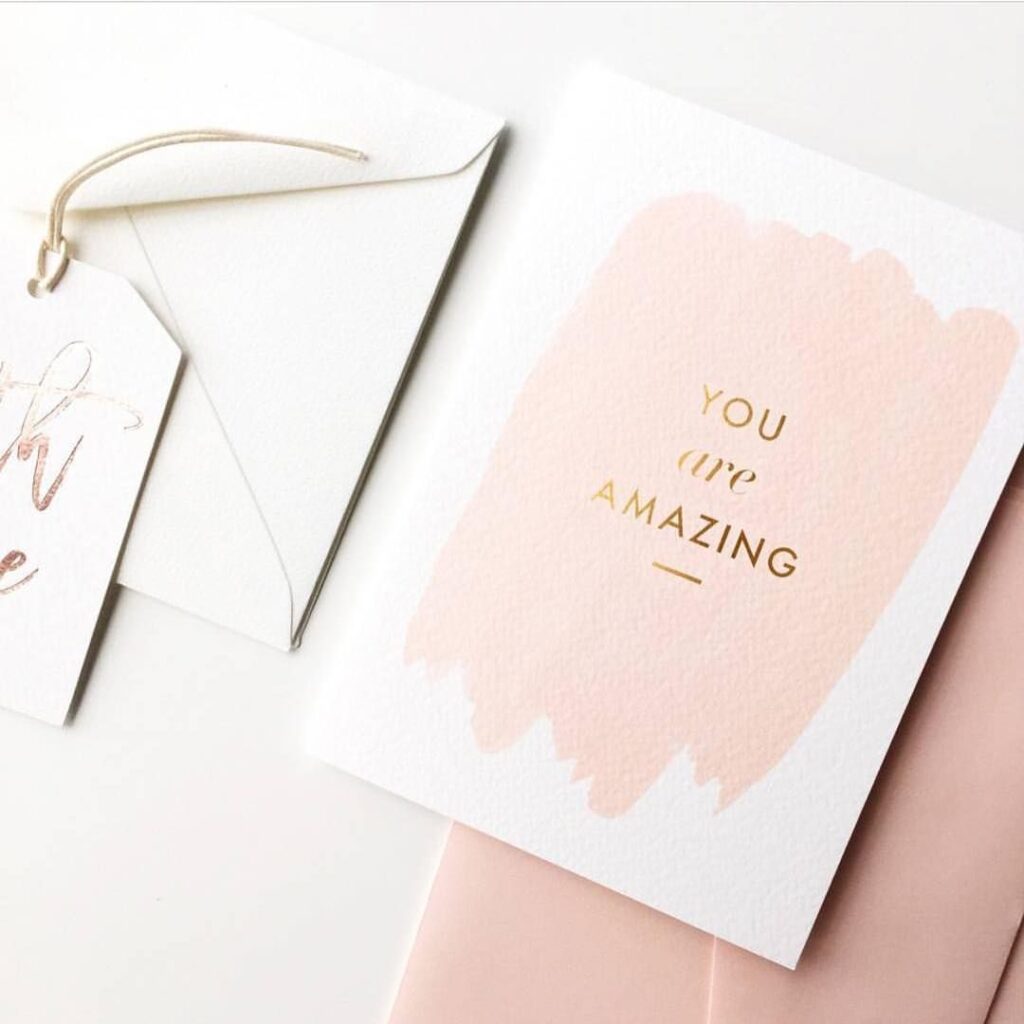
A lot of entrepreneurs are starting from nothing, so a card with the words “I believe in you” is perfect for them. Giving someone that level of support and belief will give any entrepreneur the boost they need to keep going.
3. An Entrepreneur Guidebook

If they’re looking for ways to grow their business, then a book that will help them do exactly that would be the perfect gift. The Entrepreneur’s Guidebook is great because it gives advice on topics including finance and marketing while being affordable at just $16.
4. Travel Companions

A travel companion such as this inflatable neck pillow from Amazon would be another perfect gift. Not only can it be used as a pillow, but they are also great for long trips since you don’t have to worry about them taking up space in your luggage.
5. Portable Chargers
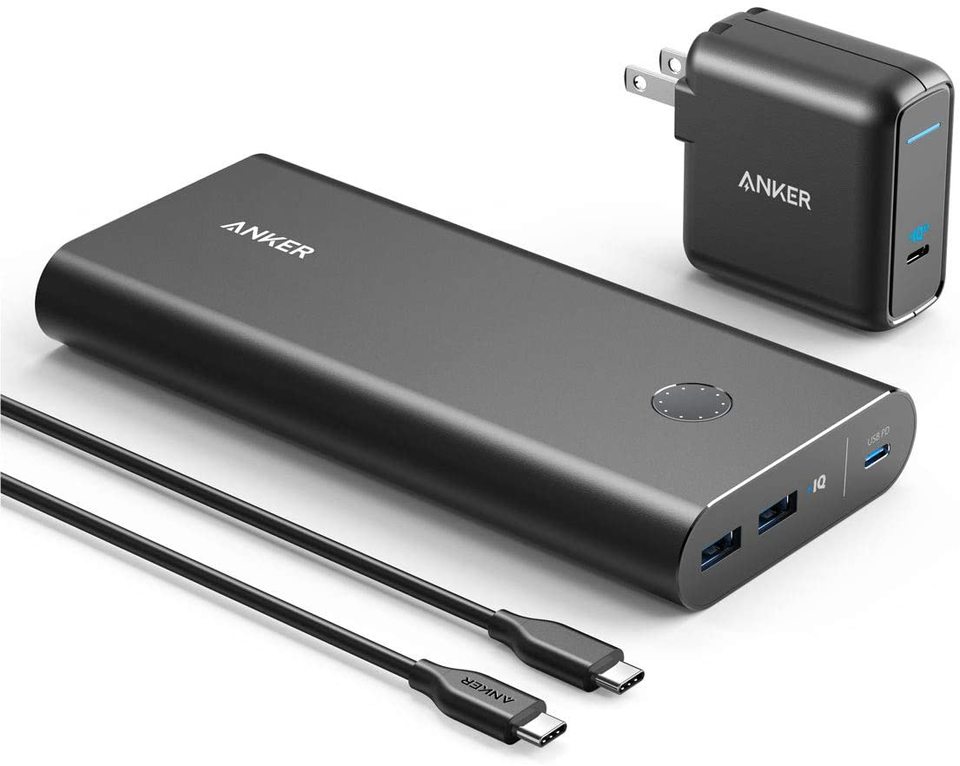
If the entrepreneur in your life is constantly on their phone then this portable charger from Anker will come in handy! It has an incredible battery life and will charge up to two devices at the same time.
6. Customized Gifts
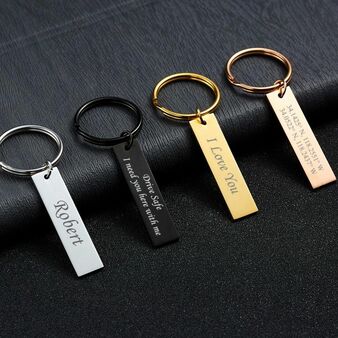
If you want to give a physical gift then this customized keychain from Memento is perfect for them. Entrepreneurs are constantly opening new doors, so show your support with this great present!
7. Work Assistance

One of the best gifts an entrepreneur could receive is help with their work. If you’re not the creative type, then there are plenty of companies on Upwork that offer assistance from graphic designers to web developers for any business need.
8. Course For Entrepreneurship

A business course! What better gift than the gift of helping with their success? A course such as, Building An Empire – The Startup Masterclass For Self-Made Entrepreneurship, is the perfect way to encourage and support.
What do you think? Did we miss any great gifts for entrepreneurs? Share them below!

So You Wanna Give a Memorable Gift: JWLS
We all have that person in our life. The one who’s always there for us, with the perfect gift to celebrate this or that occasion. The person we go to if we need a good laugh on a bad day, and vice versa.
We’re talking about our best friends and family – those people who know what makes us tick better than anyone else in the world. But when its time to celebrate them, what do you get them?
What do you get the person who has everything? It’s a question that every gift-giver faces. Well, what about something they’ve never seen before? That is exactly what JWLS offers — beautiful gifts that have a deep meaning and mission, for people with discriminating tastes. Whether it’s a fashionable watch or inspiring bangle, JWLS has the perfect present for everyone on your list!
“JWLS is all about giving back.” says founder Emily Lyons who was tired of the same old gifts. She developed JWLS in memory of her sister Julia Lyons who passed away from Cystic Fibrosis. With every purchase made from JWLS proceeds are donated to the Cystic Fibrosis community. Its truly a memorable and meaningful gift like no other. The JWLS mission is two-fold: to offer unique and thoughtful gifts for people with discerning tastes, while also giving back.
Each JWLS design is inspired by Julia. Bright watches for that fashionable friend, to classic black for the hard to buy parent. JWLS offers something for absolutely everyone on your list. So shop JWLS today, give a gift to that hard to buy person, and help a CF patient in need.
What is Cystic Fibrosis?
Cystic Fibrosis is a genetic disease where the body produces thick and sticky sweat that clogs up their airways. The CF patient’s lungs eventually fill with mucous, preventing the person from breathing in enough oxygen to survive.

COVID Fashion Trends – Can We Keep Them [Please]?
For many, when the pandemic hit and many of us began working from home, we thought, “This will pass over soon, what a nice opportunity to stay home, not commute and work in a relaxed environment!” We’d still get dressed for work, have a little corner of our home reserved as our office and figured everything will return to normal in a month or so.
Fourteen months later, the picture isn’t so quaint. Every once in a while we may look at our closets wistfully, greeting all the clothes we haven’t worn in months or can no longer fit into with what we call “The COVID 15” (like the freshman 15), or we may look at those clothes in fear, holding fast to our leggings and hoodies. Fashion is still fashion, and it often artfully mirrors culture, so here are some of our favourite COVID fashion trends. Which one are you?
1.The Business Man Sans Pants. At first, he wore pants to all of his Zoom meetings until he realized something profound: he didn’t have to. Upon that realization, he’s been business on top, party on the bottom. Now accustomed to this comfy work attire, will he ever enjoy wearing pants again? Unofficial studies show that 90% of the blazer-wearing men in your work calls were pantsless.
2. The Holy Triune: Much like the Businessman Sans Pants, this fiery entrepreneur was determined to keep looking professional whilst at work, even at home. We don’t know which came first (the chicken or the egg) – was it the messy top bun, the leggings or the hoodie? No matter, this is her uniform now and she refuses to try on an old work dress – she’s had enough nervous breakdowns in the past year.
3. The Eye-Twitch: While not necessarily a fashion accessory, the eye-twitch has become one thanks to COVID. We usually see parents sporting this look. At the beginning of the pandemic, they looked forward to more time with their kids. Because parents are superstars, they’ve still managed to keep their kids fed, educated ad entertained, plus they’ve kept their businesses together. The eye-twitch though…it might be permanent.
This year we’ve said goodbye to more than just pants, bras and showers. Other notable trends: Desks? Things of the past – the couch or bed? Why weren’t we always doing this? Delegated lunch hours? How about snacks all day in 30-minute intervals? Waiting until noon to eat? What cruel torture! 9-5? How about procrastinating all day and then staying up until 4 a.m to meet your deadlines? It’s important to spend hours keeping up with the Kardashians and also napping!
In all seriousness, we here at JWLS fully condone any comfort food, comfort wear and naps necessary to survive such a tumultuous time in world history.
We’re proud of you for surviving.
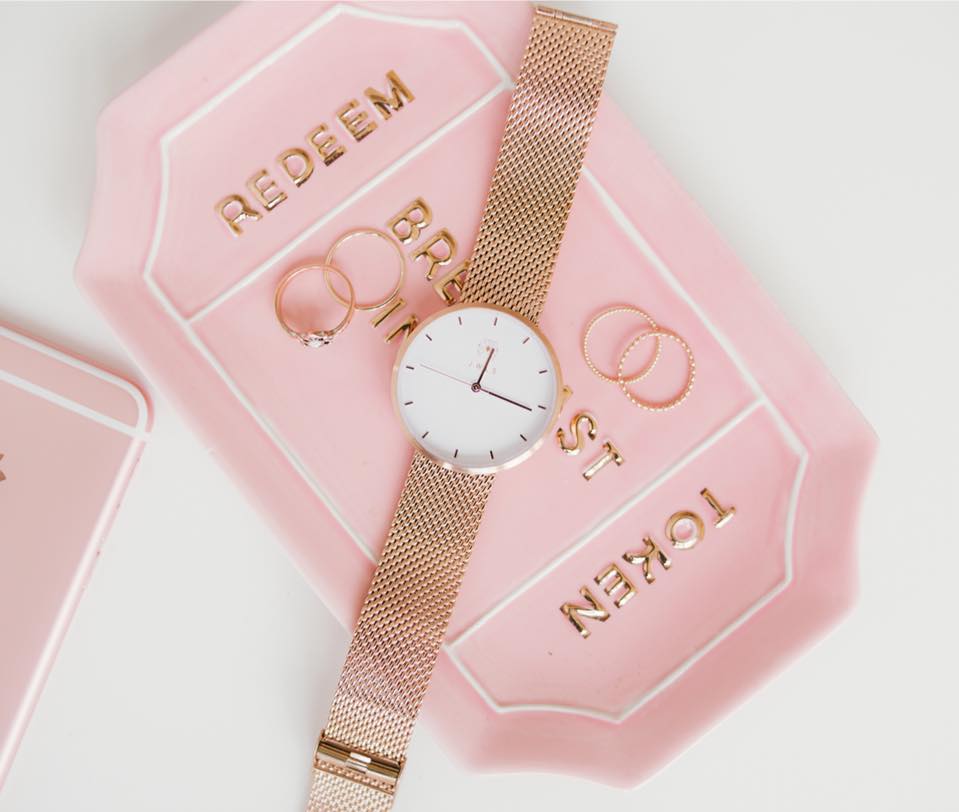
Why We Should Buy From Brands That Give Back
Because there are so many brands, so much stuff, so many things in our consumerist culture, it means that most things we buy lose their value so easily once a new thing is acquired. An endless loop of consuming and throwing away that is pretty wasteful. We each have a responsibility to the planet to curb our consumption and live moderately but when you do make purchases, buying from companies that support a cause is a conscious and meaningful way to shop.
For instance, if you buy one of our JWLS watches or pieces of jewellery, say, for a friend you can tell them that the proceeds of these beautiful objects support families dealing with cystic fibrosis, and your friend can check out more of our story online. It’s a double gift! It’s guaranteed you’ll both feel better about buying and owning this piece of jewellery, knowing that your purchase is also helping people in need. It means what you just bought is not just an object but an object of heart-centred significance.
Here are some other brands we like who are making consumerism more conscious by giving back in innovative ways:
AZURA BAY is a very lovely, tasteful, ethical underwear and swimwear store. They are body-positive, inclusive, and a portion of all their proceeds go to help restore and protect our environment and wildlife and support health and human rights programs for women and girls around the world.
STATE BAGS is an incredible company that began from seeing a charitable need. This husband and wife duo ran a not for profit summer camp for innercity kids from low-income families and noticed a distressing trend of many of the kids ‘backpacks’ being ripped up garbage bags. So they founded STATE. Backed by the likes of Beyoncé and Obama, these people donate a fully stocked backpack to a kid in need for every STATE bag purchased. And they do much, much more – check out their inspiring story and mission.
CUYANA is an elegant womenswear line with a focus on ethical consumption and the less is more philosophy. From their site, they write that they have partnered with thredUP to expand their Lean Closet program. Complimentary Cuyana x thredUP shipping labels will be included with every domestic online order from cuyana.com, and available in stores. Use your label to pare down your closet to fewer, better pieces and help benefit women through H.E.A.R.T. (Helping Ease Abuse Related Trauma).
WILDFANG is a female-founded, female-run, badass clothing store that believes women should be able to wear whatever the hell they want and be whoever the hell they want. In 2018 alone they donated 400k of their proceeds to charities that support reproductive, immigrant and female/human rights. Plus, their clothes are the bomb!
So next time you’re thinking of buying a gift for someone else or for yourself, please look into and spread the word about companies like ours who use sale proceeds to help others in need. Why not?

4 Tips for Mastering the Art of Meaningful Gift-Giving
Meaningful Gift-Giving. If you’re like a lot of people, then you’ve probably received gifts that made you smile and feel warm inside – and gifts that made you wince. In all likelihood, gifts that put a smile on your face tend to be personally meaningful – that is, they strike a chord with you because they make you feel understood on a level that’s beyond the superficial. On the other hand, gifts in the wince-causing category miss the mark because they’re cliche and impersonal and – in a certain sense – fairly meaningless to you.
With all this in mind, we think it’s safe to assume that most people would like to master the art of meaningful gift-giving. So how, exactly, can you perfect that art for yourself? While there’s a lot of advice out there on meaningful gift-giving, here are a few of the best tips and approaches we’ve encountered.
- Explore their hobbies and interests. An age-old gift-giving approach is to first discover and learn more about the gift-recipient’s hobbies or interests. That doesn’t mean you have to go all out and learn everything there is to know about that hobby or interest, but becoming familiar with the overall hobby is a good start if you want to pick out a gift that’s personally meaningful.
- Watch for hints of what they like. One clever-and-endearing way you can choose a meaningful gift? Go out shopping at least occasionally with the person you want to give a gift to – and observe what sort of things they seem to like. For example, where do their eyes linger when scanning through a store shelf? To what do they seem to give extra attention to – even if they don’t verbally signal interest in something?
- Gift them something they lost. Has the recipient of your gift lost something recently? If so, simply gifting them an item similar (or even better) than the one they lost can make the recipient feel special and cared about.
- Creatively combine their desires and values in a single gift. A very reliable – and effective – way to find a gift-with-meaning for someone is this 2-step approach: first, figure out several things that the recipient values or desires, then pick a gift that creatively combines some of those values or desires. Suppose, for instance, that the gift recipient enjoys fashionable wrist jewelry and accessories. They also tend to donate to charities and organisations that help people struggling with incurable diseases. You could combine this desire and value in a single gift – like a JWLS watch, for example (stylish timepieces that help support those with cystic fibrosis).
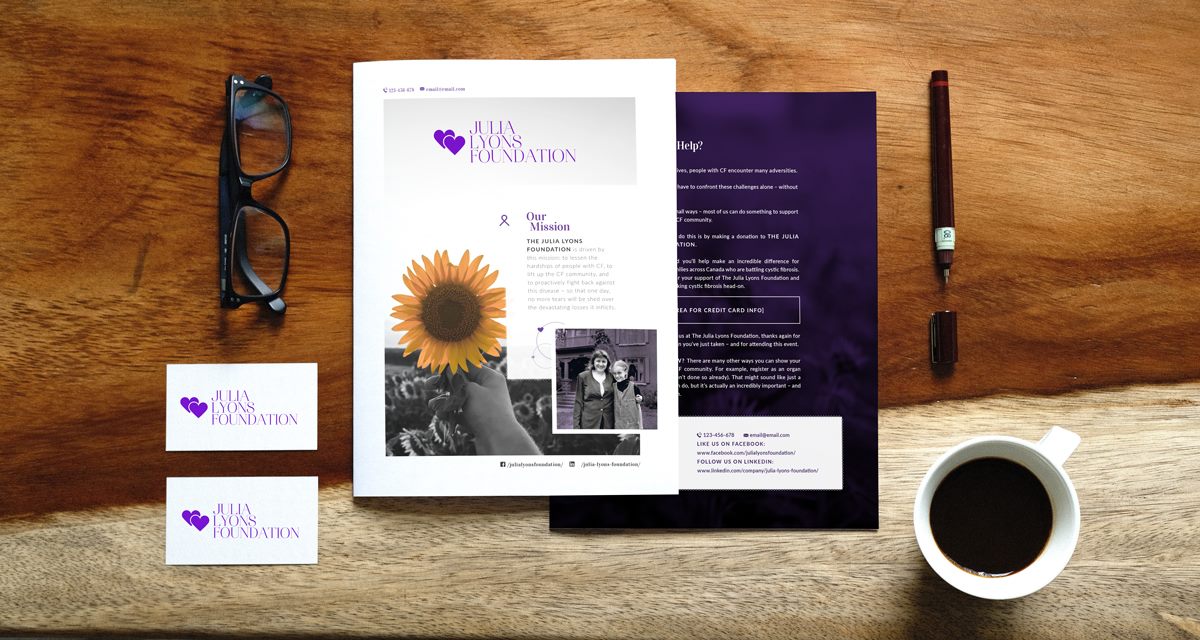
The Story Behind The Julia Lyons Foundation
In early August of this year – 2018 – The Julia Lyons Foundation was launched. For many years before, however, Emily Lyons has dreamed of creating this foundation. To understand why, you need to hear the story of another Lyons – Julia Marlane Lyons.
Julia Marlane Lyons – who passed away in 2011 as a result of cystic fibrosis complications – was Emily’s beloved older sister.
Julia was only 27 when she passed away, but Emily is grateful for all the time she got to spend with her: “That’s more than two decades of memories with the best sister a girl could ever ask for,” Emily said in a feature for Cystic Fibrosis Canada.
Born in 1983, Julia was just an infant – only 4 months old – when she was diagnosed with cystic fibrosis (CF). Given this diagnosis at such a young age, no one could have known what to expect from this precious little girl – but then again, Julia always had a tendency to surpass expectations with the force of her unflinching spirit.
Emily remembers so much about Julia: her mischievous humor, her fierce intelligence, her kindness and empathy – and her incredible drive to understand everything about the disease she had been born with.
Julia would go on to receive two double lung transplants – costly, demanding procedures which bought her a little more time. But, ultimately, that terrible day came: her lung complications mounted, and she passed away on the first day of June, in 2011.
Julia left an indelible imprint in the hearts and minds of many – including her sister, Emily, who sees Julia as her greatest source of inspiration and motivation.
And for years, Emily privately vowed to herself that she’d do what she could to tackle CF – and help those burdened with the disease. So now, with the launch of The Julia Lyons Foundation – created in the memory of “the best sister a girl could ever ask for” – Emily is bringing that personal pledge to life.
Our Mission
The Julia Lyons Foundation is driven by this mission: to lessen the hardships of people with CF, to lift up the CF community, and to proactively fight back against this disease – so that one day, no more tears will be shed over the devastating losses it inflicts.
Cystic Fibrosis Explained
Cystic fibrosis (CF) is a very deadly inherited disease – the most fatal genetic condition among children in Canada. A cure for CF does not yet exist.
The disease is caused by defects in a very important gene. These defects cause the body to produce mucus that’s much too thick – which clogs up the lungs and airways. Breathing is thus very difficult for people with CF – who are also at an increased risk of infection from bacteria.
But CF doesn’t just affect the lungs. It also harms the digestive system: individuals with CF often have a hard time absorbing vital nutrients – like fats, protein, and many vitamins.
Lung problems account for most deaths related to cystic fibrosis. And while lung transplants can improve the quality of life of those with CF, this is no cure: eventually, the new lungs can become severely damaged by thick mucus, lack of oxygen, and infection.
Current medical intervention for cystic fibrosis relies on symptom management through a regimen of medication, physical therapy, and surgery.
What We Do
How is The Julia Lyons Foundation accomplishing its mission?
The Julia Lyons Foundation – a not-for-profit organisation – provides financial aid directly to those in the CF community who need it most. Cystic fibrosis is a very costly disease: continuous medical treatment and monitoring is required, and lung transplants are very expensive procedures. Also, individuals with CF must often move to an entirely different city so they can be close to a hospital with the right treatment resources. All of this adds up – and can place extreme hardships on both the person with CF and their family.
We at the Julia Lyons Foundation believe that everyone with CF deserves excellent care, treatment, and aid – even those who do not have very many financial resources. Cystic fibrosis is a harrowing, lifelong battle to begin with – so it’s imperative that those with CF get all the support they need, whether financial or otherwise. The Julia Lyons Foundation makes this possible by working closely with the CF community to find those who are most in need of support.
DID YOU KNOW? CF is particularly lethal for those who come from low-income households. In fact, some studies report that there is a 44% increase in the risk of death for this population of CF patients.
The Julia Lyons Foundation is creating a much-needed mental health program for people with CF (and their caregivers). Emily can never forget how Julia had to contend not just with the physical symptoms of CF, but also with agonizing anxiety and depression – one hardship on top of another. It is well known within the CF community that this disease is very often accompanied by mental health challenges. Nevertheless, few mental health resources exist for people with CF – a glaring problem that The Julia Lyons Foundation is now addressing.
This mental health program is designed to provide therapists, mental health treatment approaches, and resources that are specifically tailored to individuals with CF – at no cost. This will help improve the quality of life of many people with CF. We think that if you have CF, you deserve all the social support, care, understanding, and friendship that you could ever want – and this program backs up that conviction with on-the-ground action.
DID YOU KNOW? Psychological distress can have a very real impact on the physical health of people with CF. Studies have shown, for example, that anxiety and depression in CF patients can result in worsened lung function. So anxiety and depression not only reduces quality of life, but can also heighten the risk of death. Further, the suicide rate among individuals with CF is greater than that of the general population – one tragic consequence of the inadequate mental health resources available to the CF community.
How You Can Help
Throughout their lives, people with CF encounter many adversities.
But they shouldn’t have to confront these challenges alone – without anyone’s help.
And – in big and small ways – most of us can do something to support and empower the CF community.
One way you can do this is by making a donation to The Julia Lyons Foundation.
Donate today and you’ll help make an incredible difference for individuals and families across Canada who are battling cystic fibrosis. We are grateful for your support of The Julia Lyons Foundation and everyone who’s taking cystic fibrosis head-on.
On behalf of all of us at The Julia Lyons Foundation, thank you.
DID YOU KNOW? There are many other ways you can show your support for the CF community. For example, register as an organ donor (if you haven’t done so already). That might sound like just a small thing you can do, but it’s actually an incredibly important – and life-saving – action.
Connect with The Julia Lyons Foundation
Phone: 647 955 9733
Email:info@jwlsofficial.com
Like Us on Facebook: www.facebook.com/julialyonsfoundation/
Follow Us on LinkedIn: www.linkedin.com/company/julia-lyons-foundation/
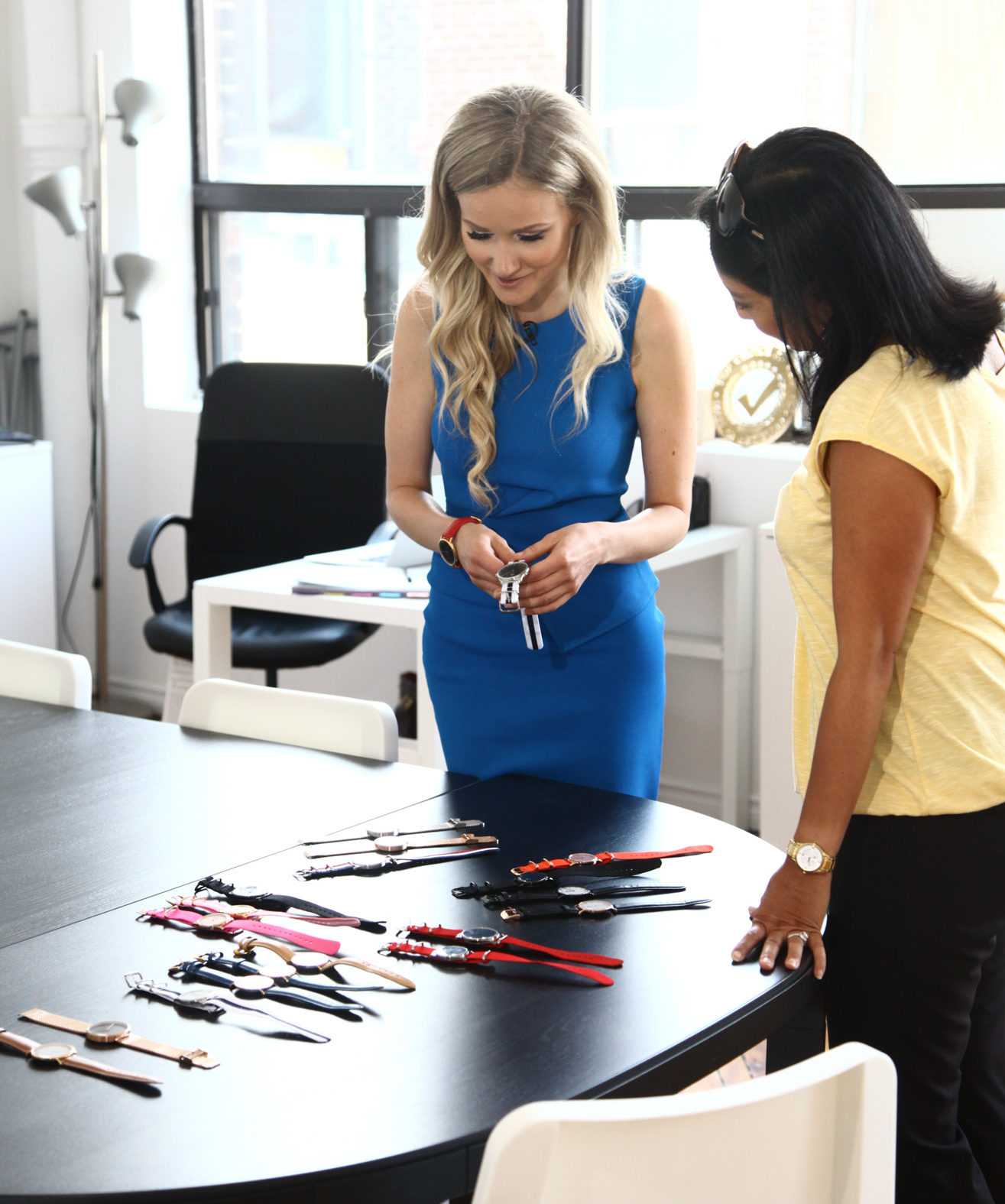
The Story Behind JWLS
Watches that make you look extra-dapper and super-fine? That’s JWLS for you. But that’s not all there is to JWLS.
In fact, it is the story behind JWLS that really sets these watches apart.
JWLS was founded in 2017 by Emily Lyons – a Toronto-based entrepreneur and rising star in the business space (she’s been featured in publications like Forbes and Maxim, to name a few, and her clients include Fortune 500 firms and A-list celebrities).
Lyons created the company because she wanted to do something about cystic fibrosis – a deadly genetic disease that had claimed the life of her sister, Julia Marlane Lyons, in 2011. Julia – who was affectionately nicknamed “Jewels” by her family and friends – was only 27 when she passed away. This loss stung Emily into action, and she vowed to use her business resources to fight back against cystic fibrosis.
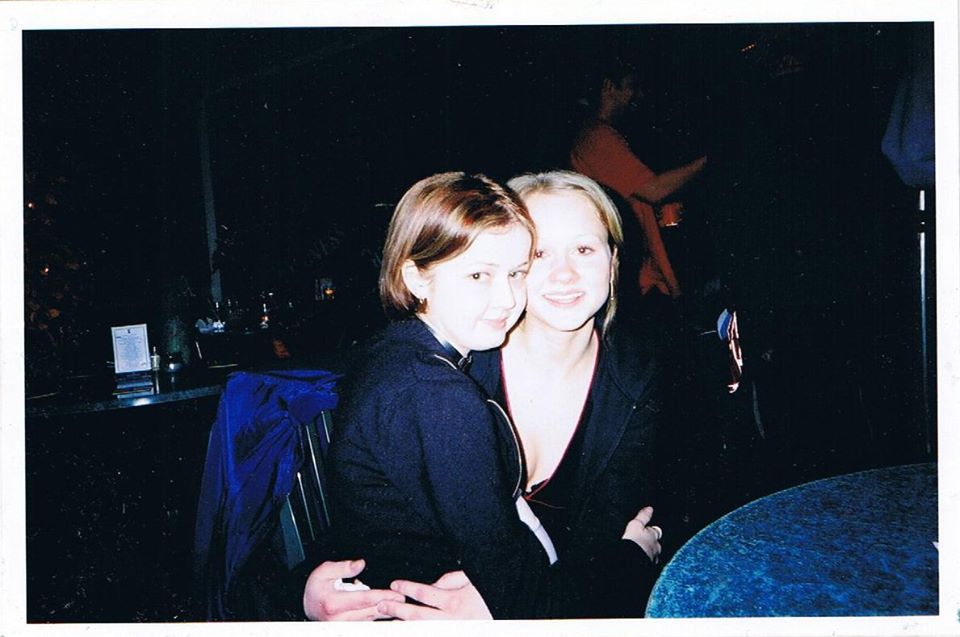
Julia and Emily Lyons
And thus she launched JWLS – named in the memory of Julia. Emily is convinced that cystic fibrosis can be vanquished – it is simply a matter of sufficient funding and the right allocation of resources. So JWLS is this entrepreneur’s solution to the cystic fibrosis problem: 100% of all JWLS’ profits are donated directly to Cystic Fibrosis Canada and other not-for-profit organizations involved in researching and combating the disease. These funds will bolster research efforts and help clear a path towards a cure that works.
“Every day I think about how short life is,” Emily remarked in an interview with Forbes, reflecting on the loss of her sister and the battle with cystic fibrosis.
Every watch in the JWLS collection is named after something connected with Julia’s life and memory. And every watch face is engraved with the JWLS logo – a pair of lungs that symbolizes the life-giving power of air and breath, which many of us take for granted.
JWLS is a tribute to the life and legacy of Julia – who will forever remain close to the hearts and minds of the many people who knew and loved her.
And your JWLS watch? It’s a sign of your willingness to stand up to cystic fibrosis and support those who must face the disease head-on every day.
What does your purchase do?
Your purchase of a JWLS watch helps fund research on cystic fibrosis – including ongoing efforts to create an effective cure for the disease. Some of the funds are given to Cystic Fibrosis Canada, a not-for-profit devoted to finding a cure. Funds from JWLS watch sales are also donated directly to those with cystic fibrosis who don’t have the financial resources to get adequate medical treatment.
Cystic fibrosis can be particularly devastating for individuals and families who don’t have access to large amounts of capital. It is an expensive disease. For example, CF patients must often re-locate so that they live near a treatment centre where they can be monitored and cared for by medical professionals. Costs like these can put tremendous strain on both the individual with CF and their family.
Emily knows this all too well; when her sister Julia was staying at a hospital in a city far from home, the family would often stay at a Ronald McDonald House to visit her and ensure that she was receiving the best possible care (and the physical presence of loved ones can go far towards alleviating the suffering of those with CF).
So your purchase, in a very real way, helps lift up the CF community – bolstering research efforts and supporting those who are in desperate need of financial assistance.
That’s why you can wear a JWLS watch with pride. You’ll be making a real impact in people’s lives – so you’ll be wearing a timepiece with a purpose.
What is Cystic Fibrosis?
Cystic fibrosis (CF) is an inherited genetic disease that affects the body’s lungs and airways – among other areas.
Healthy people have a slippery, thin mucus lining that covers their airways (airways are the hollow passages in your body that allow air to go in and out of the lungs whenever you breathe). The mucus in the airways is always moving and getting replaced by new mucus. Mucus can easily move because it’s slippery and light – so that there’s always a fresh lining of it in your airways. This mucus keeps your airways moist – so they don’t dry out from all the air flowing through them. It also captures bacteria and other harmful particles that might be in the air.
But if you have CF, this mucus lining is much thicker and much less slippery because of a genetic mutation. Since this thick mucus can’t move very easily and get replaced by a fresh lining, more and more mucus accumulates in the airways. Over time, bacteria grow in this buildup of mucus – and can cause severe lung infections. What’s more, the airways become blocked up with too much mucus – making breathing difficult. Ultimately, if lungs become too damaged from infection, they will have to be replaced through a transplant operation. But even with lung transplants, many people still die from the disease – usually due to respiratory failure.
There is currently no cure for the disease – only treatment options to temporarily minimize symptoms. Today, there are thousands of Canadians – both children and adults – who are struggling with this relentless disease.
What can you do to help the CF community?
What else can you do to help the CF community? Here are some ideas:
- Learn about CF. Knowledge is power, and the more you learn about the disease, the more you’ll understand what those with CF are going through – and how you can help them in a meaningful way.
- Follow the social media accounts of the Cystic Fibrosis Foundation, Julia Lyons Foundation, and JWLS – and other organizations concerned with cystic fibrosis. This will help keep you updated on what’s happening in the CF community – and where your help may be most needed.
- Fundraise. You can fundraise by going on walks that are often hosted by organizations like Cystic Fibrosis Canada.
- Generate awareness – share social media pics, stories, more with your network. This will bring more awareness to the disease and help encourage more research on finding a cure.


